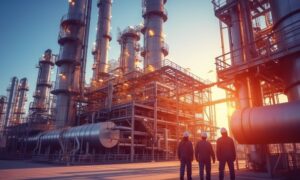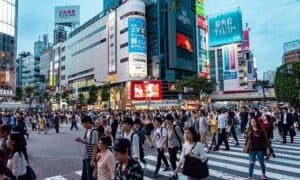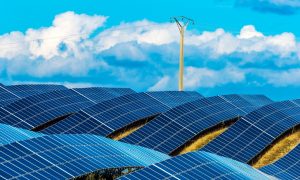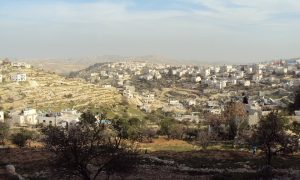Getting it right on development: We do not have to choose between people and climate
The world’s poorest countries did the least to contribute to global emissions historically and poorer people within countries emit less than their rich neighbors. Nonetheless, poorer countries and poorer people are more vulnerable to climate impacts. They tend to be more exposed to climate change impacts, for instance living in places exposed to floods, working in occupations like agriculture, or lacking access to improved water and sanitation. And they have fewer resources to adapt and invest in protecting themselves.
With or without climate change, there is also no doubt that growth in income and energy consumption is necessary in the poorest countries, where many people do not have access to the basic needs for a decent life. Today, 2.8 billion people cook with traditional fuels—which kills millions, especially women and children, through indoor pollution. Access to health, education, or mobility is far below what would be considered acceptable in rich countries. Delivering these services must be a priority.
Given this context, the response to climate change has to be not only efficient but also fair. Both efficiency and fairness require that we do not slow down development and poverty reduction in poor countries. In fact, rapid and inclusive development can reduce people’s vulnerability to climate change, potentially halving the number of people that will fall into poverty due to climate change by 2030.
But to stabilize climate change, all countries – including low- and middle-income countries – will need to contribute to bringing global net carbon dioxide emissions to zero. According to global scenarios, if low- and lower-middle-income countries choose business-as-usual development while the rest of the world transitions to a net zero path, global greenhouse gas (GHG) emissions would plateau around 20 GtCO2e in 2050, or 40 percent of current emissions. What does this mean? For one, it means a much harder transition for these countries – significantly greater climate impacts and higher costs to transition their economies and reduce emissions after 2050. It also would also mean global temperatures rise to well above 2.5 degrees Celsius – at which point significant climate impacts will be unavoidable.
In fact, many of the trades-offs of the past — when greener options were more expensive — have disappeared, creating unprecedented opportunities for green growth.
Today, in most countries, it is possible to expand energy access using renewable sources, such as wind and solar. Their costs have declined precipitously in the past decade, making them not only cheaper than natural gas and coal in most places, but also the cheapest source of energy the world has ever had. When one factors in the local environmental and social costs of fossil fuel extraction and dependence or on fossil fuel imports, the comparison is even more stark. Empirical studies have also found that fossil fuel subsidies – and then reliance on artificially-cheap fossil energy – has a negative impact on productivity, with studies on Mexico, Indonesia, and Oman.
Climate policies, as well as those more generally environmental in nature, contribute to economic growth through four channels:
Boosting human capital by making people more productive and creative because they are healthier and better educated. Many actions to reduce GHG emissions have benefits through reduced air pollution and more generally a better environment. Not only are we all less productive when air quality is low, but air pollution can affect permanently the physical and cognitive development of children, with implications for their lifelong happiness and economic prospects. For these reasons, the 1970 Clean Air Act in the USA is credited not only with having prevented hundreds of thousands or premature deaths, but also with generating substantial economic benefits. A study in China estimated that lowering PM2.5 to 25 ug/m3 nationally would increase productivity by 4.5%. A study in Israel found that transitory PM2.5 exposure is associated with a significant decline in student performance.
Boosting natural capital, building on the services nature gives us. Food production and access to clean water depends on healthy soil and ecosystems, so landscape management (or restoration) can do more than reduce carbon emissions: they can also generate higher incomes for farmers and lower food prices. And forests and mangroves do not only store carbon: they also reduce flood risks and support livelihoods. The sooner every country recognizes, measures, and manages this natural capital, the better for us all since preserving ecosystems services will deliver environmental and economic benefits, with climate change stabilization one of these many benefits.
Boosting technological change and increasing productivity. Favoring cleaner technologies eventually makes them able to compete with dirty ones on economics alone, something often referred to as the Porter hypothesis. Today, solar and wind electricity is not only cheaper than fossil-fueled power, as mentioned above. But they are also better suited to connect low-density high-poverty settlements that fossil fuels technologies have failed to reach. Heat pumps are much more efficient than traditional boilers and provide protection against increasingly frequent heat waves. Electric cars are reaching lifecycle cost parity with traditional cars, while reducing air pollution and dependency on imported oil, and e-bikes offer new opportunities to fight congestion and pollution in cities at all income levels.
Boosting efficiency and getting more with less. Making wasteful economic systems more efficient, in particular by fixing commonplace local externalities, can increase growth beyond the accumulation of factors of production. This is a well-accepted fact that distorted prices – for instance with fossil fuel or water subsidies – increase GHG emissions, pollution, and environmental degradation, but also lead to resource misallocation and reduced growth. The combination of urban planning, functioning land markets, and investment in public transit and bike lines can reduce emissions but also create productive cities that are essential to create the urban jobs that so many countries need. Such investments in better institutions and governance are hardly development trade-offs: good institutions are at the core of economic growth and development.
Today’s institutions, regulations and infrastructure are still failing to unlock the full potential of higher productivity, lower-cost technologies like renewable energy or electric mobility. Targeted reforms or investments can help capture these opportunities, from solar mini-grid in rural areas to e-bikes in crowded cities, and accelerate poverty reduction, including in the lagging regions that have not benefited much from global economic growth in the last decades.
The right question is not whether climate action creates a synergy or a trade-off with growth. The response to such an abstract question will always be “it depends” since the design of climate policies is key. For instance, a large meta-analysis of the impact of environmental regulations on competitiveness suggests that environmental regulations are as likely to increase productivity as to decrease it, depending on the context. A study of OECD countries also suggest that environmental regulations promote growth, up to a certain level of stringency when costs exceed the innovation impact of the policy. And it is well known that the distributional impact of energy subsidy reforms or carbon pricing depends on how the revenues are used, either to reduce other taxes, to pay for public services, or redistributed directly to the population. Instead, .
Delivering the low-carbon, resilient transition will not be easy. It requires significantly boosting developing countries’ access to capital for low-carbon, resilient investments so that they can get the right infrastructure in place. The higher capital intensity of greener technologies combined with the public finance challenges of the post-COVID period certainly makes these investments challenging. Financial support from richer countries is essential and needs to grow beyond current levels.
The main risk for low-income countries today is not to be denied access to outdated, costly, and polluting technologies, but rather them being denied access to the newer, cleaner and more productive technologies of the 21st century and left disconnected from global value chains and locked into technologies that have no future. and skip the expensive retrofitting/replacing process that higher income countries will be experiencing in the next few decades.
Despite its inherent unfairness, all countries will face the climate crisis.



























